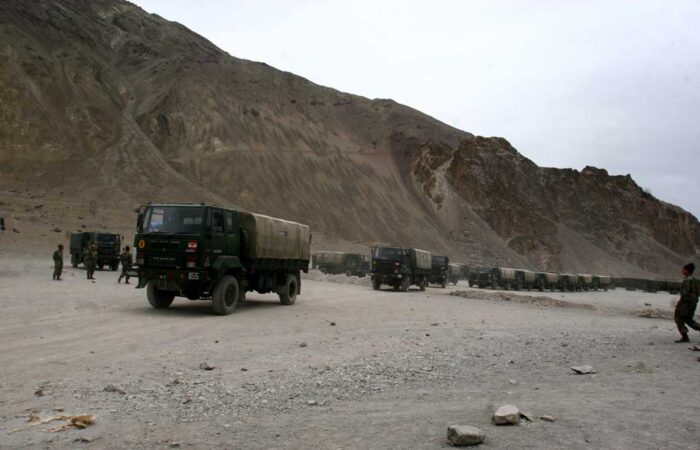
File Picture
Dr. Henry Kissinger, statesman and former US Secretary of State famously said that “the task of diplomacy is more about managing problems rather than their outright solutions”. Doesn’t it seem applicable to the current Sino Indian border stand off in Ladakh? This is a question that must be in the minds of any discerning observer even when military build up by both the parties is continuing with remarkable speed. A border dispute doesn’t stand by itself as the primary reason for armed conflict now as in the periods up to second world war when control over strategic ports, Roads and Railways and lands was vital for winning wars.
Just think of the importance of Alsace Lorraine province along Franco German border during the last two world wars or Singapore for defense of the British empire in Malay peninsula and even Burma and India during the second world war. However, the end of the cold war in the 1990’s with the collapse of the Soviet Union and the Chinese ” quick march” to capitalism that began in 1978-9 with the reforms of Deng Xiaoping changed the whole scenario as the process of ” globalization” was embraced by all major economies of the world which boiled down to two institutions : First, the idea of a growing and reasonably free market across national boundaries and second, the institution of a global supply chain for manufacturing products and providing services founded on the common faith in ” economic efficiency”. This produced a situation when it becomes difficult to pin point the country of origin of a product or service as it is invariably the out come of work at various places. Somewhat unconsciously this has diluted the idea of economic nationalism or at least the sentiments associated with the ” national products” as before because few value added products are made wholly in one country as parts of the same might have been manufactured elsewhere. The role and functioning of the World Trade Organization must be seen as watch dog bodies for ensuring spread of globalization and free trade and once China was admitted to the WTO in 2001, a sea change in global trade and development took place.
In this background let’s see why is China being so belligerent in Ladakh sctor of the Line of Actual control. The media reports of high stakes of China in CPEC – China Pakistan Economic Corridor as it provides China access to Gwadar Port which demands assured control over the highway the Chinese built through the Pak occupied Kashmir and Aksai Chin part of Kashmir that China also holds illegally don’t seem very convincing; because Pakistani economy is floundering and unlikely to be an effective partner in China’s grand design of the BRI- the Belt and Road Initiative. Pakistan lacks technological strength and corporates capable of taking part in multidimensional economic ventures and its state and society being caught between the ” mosque and the mullah” is not capable of being anything but a problem for India in Kashmir and for the US a problem in Afghanistan. Pakistan would be a problem for China in the short to medium terms.
In this background if one looks at the $ 88 billion Sino Indian trade, the huge trade deficit India suffers in the same and prospects for further expansion, the Chinese aggressive design in Ladakh appears to be reckless based wholly on misreading of India’s 5 August,2019 decision to reorganize Jammu and Kashmir and make Ladakh an Union Territory. Defense roads and infrastructure upgradation works that India have taken up are well within the Indian side of the LAC and pose no threats to the Chinese position other than a strong message of India’s commitment to the agreements with the Chinese in regard to the LAC. The Chinese build up since April this year in East Ladakh is clearly disproportionate to the requirements for peace in the LAC. However, now that the Chinese have dug into Eastern Ladakh, its security implications for India are clear that Ladakh sector and the LAC will remain ” militarised” much like the way the LOC in Kashmir have been ” live” for decades now unless the current talks succeed in restoration of the status quo ante in East Ladakh as in April and orderly joint management of the LAC in letter and spirit of the existing agreements on border management. Military build up along the border is a sign of mutual mistrust and hence the need for confidence building measures by China because the tensions might affect the Eastern sector of the LAC in Sikkim and Arunachal Pradesh.
These developments suggest the urgent need for early demarcation of the LAC at least in some segments to prevent transgressions and skirmishes in the larger interest of peace and stability of South Asia.
[the_ad id=’22723′]


















